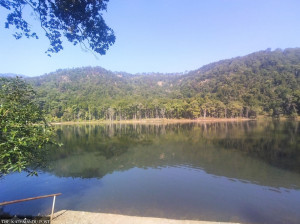Sudurpaschim Province
Sudurpaschim’s budget lacks vision and strategic plan: Tourism entrepreneurs
The provincial government comes under fire for allocating much of the funds in building temples and shrines._0701105ka.jpg&w=900&height=601)
Mohan Budhaair
The Sudurpaschim Provincial Government allocated Rs 440 million to promote tourism. But six months into the fiscal year and Visit Nepal year ongoing, tourism entrepreneurs say the budget is being spent on ambitious, poorly prepared projects of little strategic footing.
The government has planned to construct a corridor to Badimali Temple, along with three other corridors. Of which, three corridors would link Sudurpaschim to Kailash Mansarovar, according to Kishore Aryal, chief of the implementation unit of the tourism development programme. Aryal said that a total of Rs130million has been allocated to those corridors which would link Kanchanpur, Dhangadhi, Baitadi, Dadheldhura and Bajhang to Mansarovar. According to Aryal, the budget would be invested in promoting tourist destinations along the way.
“The plan is to promote tourism under a three-year strategic plan,” he said. “Since about half of the current fiscal is over, we are thinking of allocating budget for the recognised destinations from the ground research report.”
But tourism entrepreneurs and stakeholders said the government has allocated budget without any preparation and thought. “How good is an idea that talks of constructing corridors without any feasibility study?” said Shankar Bogati, chief of Chamber of Commerce, Sudurpaschim. “The government has ignored the most important thing: to prepare a strategic plan.”
Bogati also doubted whether the budget would be actually used to construct the corridors. “I think they will spend the budget in the construction of view towers, rest spots, homestays, documentary film and promotion,” he said. “I doubt the plan will materialise without the recommendation of experts and tourism entrepreneurs.”
Another of the provincial government’s plan is called “A provincial visit for the elderly”, according to which, the elderly above 60 would be taken on a province-round journey “to facilitate domestic tourism,” said Aryal. Rs2.5million is allocated for this project.
Likewise, budgets have also been allocated to develop adventure tourism and promotion, to establish information centres, and facelift the existing tourism destinations.
But Dinesh Bhandari, a local tourism entrepreneur, said that the government’s projects are showy rather than properly planned and thoughtful. “It’s hard to assume the budget would yield desired results for the tourism fraternity,” he said.
Another area of the investment of heavy budgets is the construction of temples and religious sites.
According to an official at the implementation unit, the budget has been allocated to construct over 100 temples and shrines according to recommendations from political leaders and cadres. The government has allocated Rs50million for ‘religious tourism promotion’ in the current fiscal year.
Bhandari says investing heavy amount to construct temples is ludicrous. “It is not that constructing temples would attract tourists in droves,” he said. “The government should identify the prime destinations, study feasibility and develop infrastructure and service.”
Mayaprasad Bhatta, chief of Sudurpaschim bureau of Nepal Association of Tour and Travels Agents (NATA), said the government should, first of all, cooperate with the private sector before formulating plans. “The private sector is often oblivious of the plans and projects the government introduces,” he said. “The government should discuss with the tourism entrepreneurs about short-term and long-term projects because they might know better.”
Among the critics of the government’s plan is Krishna Bahadur Mahara, member of Nepal Tourism Board, who said that plans without a strategic foundation would yield no result. “The government should first prepare the master plan to develop tourism in the Farwest—the master plan should identify destinations, study feasibility, and focus on infrastructure development,” he said. “Only that would generate the desired outcome if executed well.”




 13.12°C Kathmandu
13.12°C Kathmandu











%20(1).jpg&w=300&height=200)

